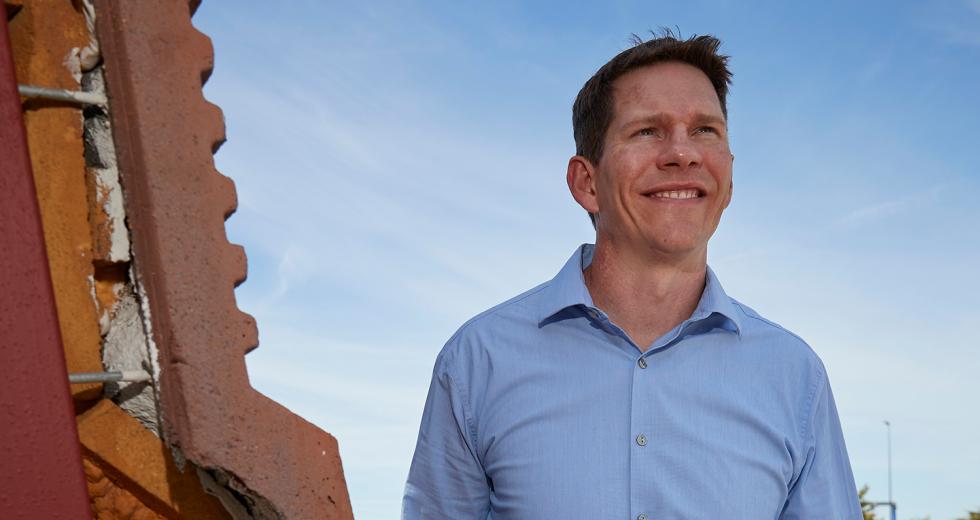Construction should be as simple as buying a car: A customer walks into a showroom, picks the color and options, covers the down payment and walks away with the keys. The customer doesn’t have to pay attention to the skeletal structure of the car or the varying components like air conditioning that often is a given these days.
That is the vision Angela Jackson, a spokesperson for West Sacramento-based Clark Pacific, outlines when it comes to the approach the company is taking to building out new structures. “The car’s chassis, electrical, duct systems are standard,” she says. “We don’t really care about the electrical system other than we want the lights to come on when we flip the switch. The car manufacturer doesn’t reinvent the chassis every time.”
Clark Pacific, an engineering firm that specializes in the design and manufacturing of prefabricated panels and systems, is preparing to launch Infinite Panel, a complete building envelope system to simplify this part of the design and construction process. The company says when the Infinite Panel launches later this year, it will be the standard solution on all of its projects.
Founded in 1963 as Tecon Pacific, the family-owned company — now operated by engineers Donald and Robert Clark, the sons of former Tecon Pacific general manager Jim Clark — boasts of being at the forefront of development in the Western United States by “pushing the limits of what prefabricated building systems can bring,” according to its website.
In 2016, the University of San Francisco tapped into the expertise of Clark Pacific while working on plans to construct a 595-unit apartment complex. The high cost of living in the Bay Area coupled with a rising demand for affordable housing proved the need for new student housing, but the university had a shoestring budget.
The school hired architecture firm KieranTimberlake to design a housing center that could accommodate more than 700 students while reflecting the overall gritty-industrial look and feel of San Francisco’s Dogpatch neighborhood. The school and the architect had grand ideas that incorporated aesthetics, energy efficiency and environmental conservation. Clark Pacific employed a technique known as Target Value Design to help the university get creative, while staying within budget.
“The car’s chassis, electrical, duct systems are standard. We don’t really care about the electrical system other than we want the lights to come on when we flip the switch. The car manufacturer doesn’t reinvent the chassis every time.” Angela Jackson, spokesperson, Clark Pacific
“In traditional construction, there’s a design team, architect and structural engineer and general contractor, and these parties are typically hired by the owner,” says Tom Anderson, the general manager of façades at Clark Pacific. Each of those teams come up with a different solution, and each solution comes with varying degrees of complication that takes time and money to sort through and resolve. Target Value Design streamlines the process by adopting a middle-man approach — in this case, Clark Pacific — that organizes the thoughts of the different teams and whittles them down into a single solution from the very start.
Clark Pacific is not the only company that uses the Target Value Design system. But soon it will be the only company to offer the Infinite Panel, a standardized, all-inclusive single panel frame the company says will further cut costs and save builders time by offering an out-of-the-box solution that architects can work around when designing a structure: Instead of combining the visions of different teams, architects will only have to worry about how the building will look, Anderson says.
The Infinite Panel is similar to a car’s chassis: Like Lego bricks, panels are made from a standard design and lock into each other based on the vision of the project architect. The panels are constructed at one of three Clark Pacific plants, including a plant in Woodland, to meet or exceed various building codes and standards. In the future, Clark Pacific says it will start offering its own line of high-efficiency windows that will be made exclusively for its façade systems, including the Infinite Panel, though the company is giving its clients the choice of buying windows from others.
Similar panels are offered by other companies, but the Infinite Panel is unique in that it allows for the panels to be reshaped, resized and finished in any way demanded by the customer. “By having a standardized product, what it does is it drives the quality up and it ultimately drives the price down, and it creates schedule certainty and cost certainty as well,” Anderson says.



